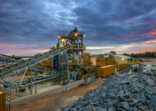Listed infrastructure products have mushroomed on the back of the newfound interest among medium to small investors. In 2006, there were nine listed infrastructure mutual funds and no listed infrastructure exchange traded funds. Ten years later, there are 66 listed infrastructure mutual funds and 32 ETFs tracking listed infrastructure indices, according to data from the Edhec Infrastructure Institute-Singapore.
Deutsche’s Matthias Meyer, head of liquid real assets for Asia & Europe, said one key reason why investors have been allocating to listed infrastructure is the accessibility factor.
“To get a globally-diversified portfolio on infrastructure is difficult to achieve by just going direct. Instant diversification over vintage years and instant capital deployment are encouraging high net worth investors in Asia to deploy their capital to this asset class for an affordable minimum investment.”
However, the chief criticism of listed infrastructure funds is that you don’t get the same benefits — namely non-correlated high, stable risk-adjusted returns — as you do going direct.
Academics at Edhec have stated that based on their research, not all products labelled ‘infrastructure’ are adding value to the portfolio of an institutional investor.
“In particular, the fast-growing listed infrastructure sector is shown by peer-reviewed academic research to offer zero additional value to an institutional portfolio,” they said.
Edhec’s research shows that listed infrastructure indices have a 20% tracking error against the equivalent infra broad private equity market index. In their view “listed infrastructure equity does not have a better risk-adjusted performance profile than the market index; does not exhibit downside protection characteristics; does not improve portfolio diversification; is replicable using traditional asset classes; and is also replicable using standard risk factors.”
Meyer counters that you can still get those things from a listed infrastructure product.
“By the nature of it, yes, you have a higher measured volatility with listed infrastructure because one is trading daily, while the other (direct infra) has appraisal value, which means you only know what the real value is when you sell the asset. But in the end, you can get the same assets.”
Looking at the stable long-term returns argument, Meyer adds, “We have seen that since the early 2000s, infrastructure asset owners who we focus on have produced positive Ebitda and cashflow growth every year.”
He concedes the diversification benefits are not as high as the benefits you achieve with direct investment, “but this has something to do with the measured volatility of the asset class”. He suggests the pure-play approach adopted by Deutsche, where they only invest in infrastructure asset owners, “who have a very inelastic demand profile” offers ample diversification nonetheless.
Comparing listed and direct infrastructure is tricky because there are no direct infrastructure indices with long term historical data, but Meyer maintains that in the long run, “you get similar long-term total return, it’s just a different measure of volatility.”
The top five performing infrastructure funds available for sale in Hong Kong. The period is the trailing five years. The MSCI World Infrastructure index is provided for comparison.

Source: FE. All fund NAVs and indices have been converted to US dollars for comparative purposes. The index used may not be the benchmark for a featured fund.
















